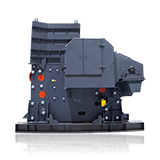How to Configure a Granite Production Line?
Granite is a high-quality building stone with uniform structure, hard texture, beautiful color, density of 2790~3070kg/m³, compressive strength of 1000~3000kg/cm², elastic modulus of 1.3~1.5x106kg/cm³, water absorption rate of 0.13 %, Shore hardness> HS70, specific gravity 2.6~2.75. For this kind of hard rock, the crushing process is generally used before subsequent use.
Granite is a hard rock with a saturated uniaxial ultimate compressive strength greater than 30MPa. For this type of rock, coarse crushing, medium and fine crushing and shaping processes are generally used to process raw materials to finished products. This article briefly introduces how to configure a granite production line?. It is also suitable for basalt, diabase, andesite and other materials that are difficult to crush or have a higher crushing cost.
2. how to choose a granite crusher?
According to the different products required, a crushing process can be divided into coarse crushing section, medium crushing section, fine crushing section and grinding section.
General materials can be divided into three major types of process engineering according to the required products: coarse crushing + medium crushing, coarse crushing + medium crushing + fine crushing or coarse crushing + medium crushing + fine crushing + shaping. Shaping is generally to make the obtained product better in grain shape.
Commonly used crushed products in the whole crushing process are as follows:
The jaw crusher is used in the first crushing process of the crushing line. It can crush large particles with a compressive strength of not more than 320MPa to a size of 100mm~300mm.
The impact crusher generally can process ores or rocks with a compressive strength of up to 350MPa under 500mm, and the crushed materials are cubic particles. The impact crusher is generally used in the second crushing process of the crushing line, and can also be used as the first crushing process for materials with a small input.
The cone crusher uses the principle of laminated crushing to form a protective layer of the material layer. It has the characteristics of reliable structure, high crushing efficiency, convenient adjustment, and economic use. The feed size is 13~369mm. Cone crushing is the same as impact crushing. It is often used in the second crushing process of the crushing line. It can also be used as the first crushing process for materials with small feed. However, the feed particle size of cone crusher is generally smaller than that of counter-attack crushing.
The sand making machine is suitable for crushing and shaping of soft, medium hard and extremely hard materials. It is generally used as the last process of the crushing sand production line, and the feed size is 35-60mm.
In addition to the main crushing equipment, some auxiliary equipment such as vibrating screens, feeders and conveyors are needed to complete the configuration and work of this production line.
3. Configuration of granite production line
Due to the hard texture, the granite production line configuration generally needs to go through three stages, namely coarse crushing by jaw crusher, medium and fine crushing by cone crusher, and sand shaping by sand making machine.
Large pieces of granite material pass through the silo to the vibrating feeder for uniform feeding, and then enter the jaw crusher for the first crushing. After the coarsely crushed material is screened by the vibrating screen as required, it is transported to the cone crusher by the belt conveyor. The machine performs the second medium and fine crushing.
After the medium and fine crushing, the circular vibrating screen is used for screening, and the larger particles are returned to the cone crusher to be crushed again.The materials that meet the requirements are sent to the sand making machine for further crushing and shaping. If the materials need to be cleaned, they can be sent to the sand washing machine for cleaning.
Finally, the materials that meet the requirements are classified and packaged according to different particle size ranges.
The equipment configuration of the granite crushing production line is mainly determined according to the user's stone specifications and output and the use of the stone. The process is configured according to the production site. There are different types of crushing equipment, and different models correspond to different production capacity, feed size and discharge size. Therefore, the crushing equipment corresponding to the production capacity should be selected according to the required stone specifications, output and stone products, in order to obtain the most reasonable and economical production line.
4. Examples
The granite (or basalt) crushing production line with an hourly output of 600~700t, according to the configuration plan described above, can be equipped with equipment that can meet the hourly production task, specifically the silo——vibrating feeder GZD1500×6000——jaw crusher PE1200 ×1500-cone crusher HPC400 (2 sets)-circular vibrating screen 3YZS2160 (2 sets)-sand making machine 5X1145 (2 sets), each equipment transports materials through the conveyor belt.
Note: When the feed size is less than or equal to 320mm, the material can be directly crushed in the cone crusher, without the first stage of coarse crushing.
When choosing hard rocks such as granite, two considerations should be taken: first, the configuration of production line equipment should be selected according to the grain size of the finished product; second, matching production equipment should be selected according to the amount of production tasks. Ensure that the above two points can basically determine the production line process to ensure production efficiency.
Previous: Basalt Crushing Plant
Next: River Pebble Sand Making







